DEFINITION OF TERMS:
- KEYSTONE means they are listed by National Wildlife Federation as core plants for a wildlife garden in my ecoregion (Ecoregion 8).
- NOT QUITE NATIVE means they are slightly out of range but adjacent to NYS as determined by GoBotany and NY Flora Atlas.
- Otherwise the plant is a NY-native or native to the area noted.
CAUTION: Don’t get milkweed sap in your eyes. This warning probably applies to other kinds of plants, too, but this is the only plant I’ve seen warnings for.
Learn more about milkweeds and monarchs
Poke milkweed (Asclepias exaltata)
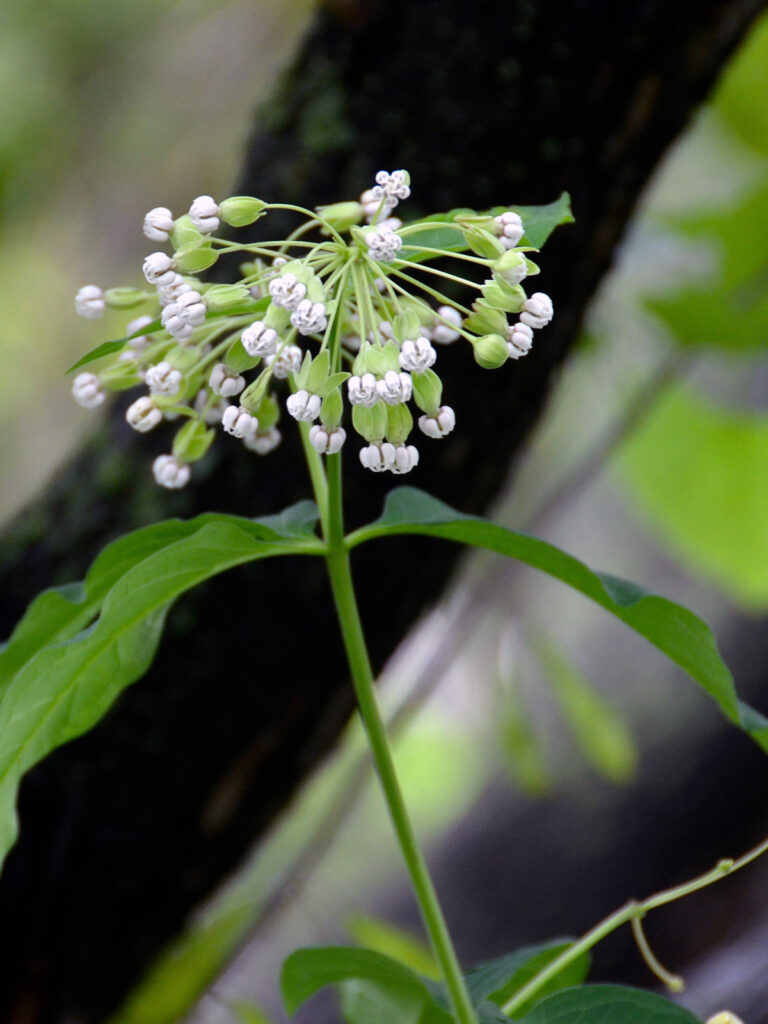
Poke milkweed (not to be confused with pokeweed) is a milkweed that will grow in the shade.
I have only one plant, but I’ve found monarch eggs on it, so it looks like a small patch would be a good choice for someone who has only a shade garden.
** SPECIAL VALUE TO NATIVE BEES **
** SPECIAL VALUE TO BUMBLE BEES **
** Attracts predatory or parasitoid insects that prey upon pest insects **
- Learn more:
- Wildflower Center: Poke milkweed
Swamp milkweed (Asclepias incarnata)
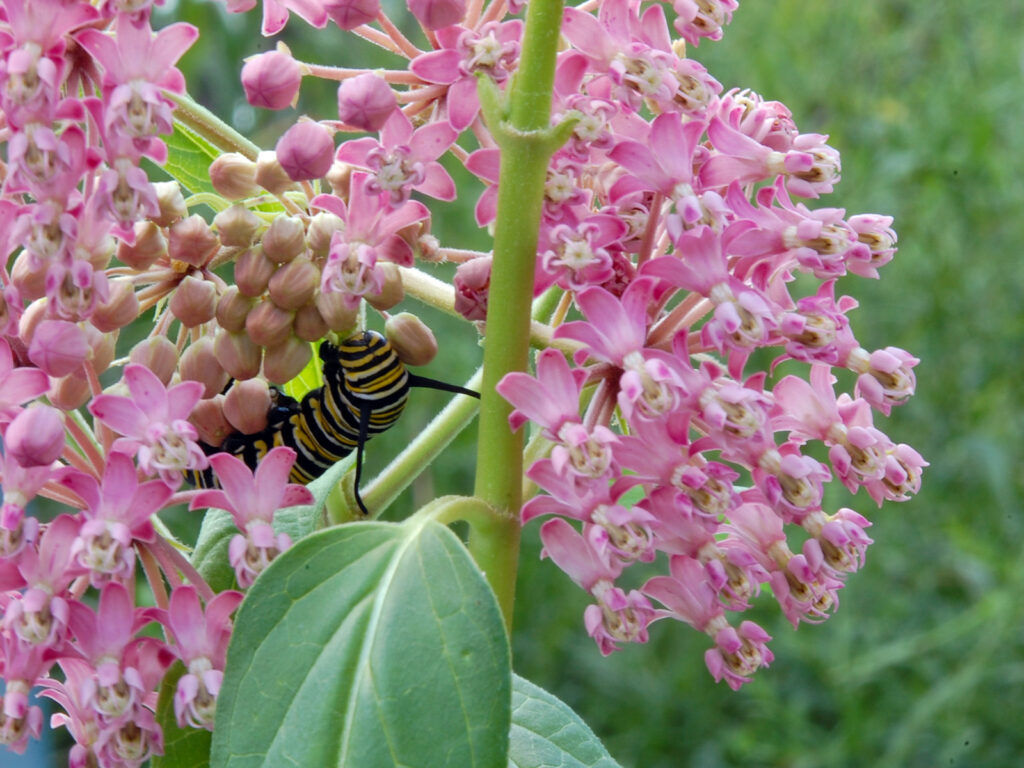
I have more swamp milkweed than any other kind of milkweed. Not only is it a beautiful plant for the garden, it’s one of the monarch’s favorite types of milkweed. It’s useful for gardens since it doesn’t spread underground, as does common milkweed. I do find volunteers here and there, but not as many as I would like. Contrary to its name, it does not need to grow in wet areas, though it certainly can.
Wildlife: Butterflies, hummingbirds
Larval host: Monarch butterfly, Queen butterfly
Deer resistance: High
** SPECIAL VALUE TO NATIVE BEES **
** SPECIAL VALUE TO BUMBLE BEES **
** Attracts predatory or parasitoid insects that prey upon pest insects **
- Learn more:
- Wildflower Center: Swamp milkweed
Purple milkweed (Asclepias purpurascens)
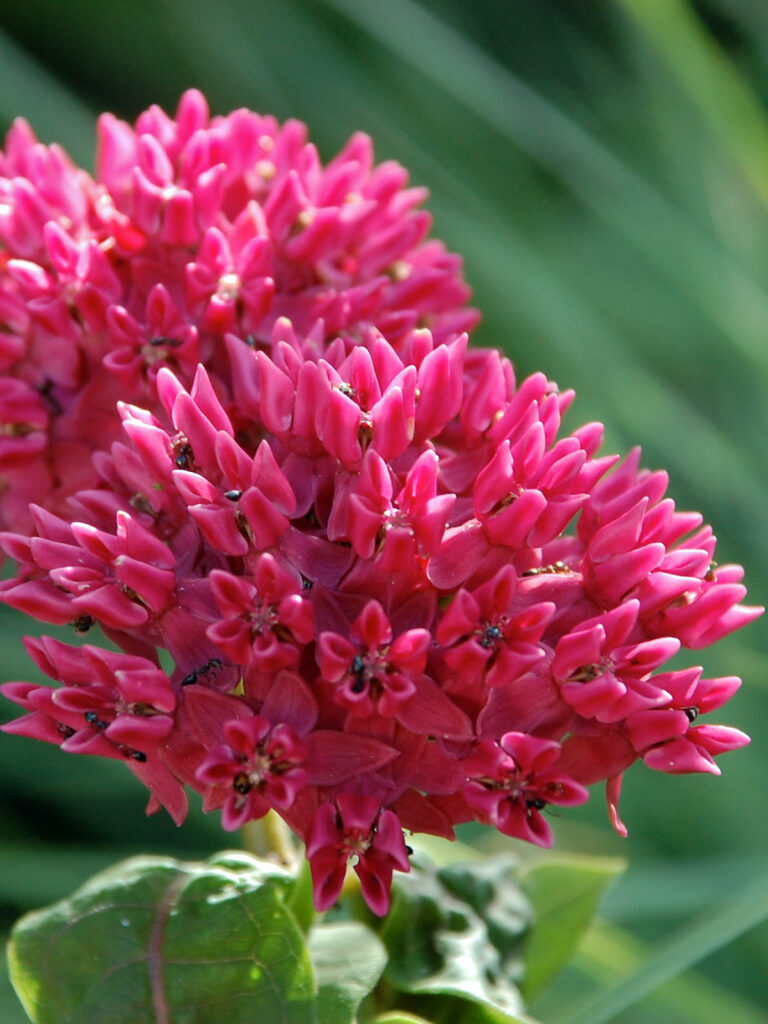
This is gorgeous. I had one plant and hoped for many more, but it never set seed and eventually died. I’ve read that there must be an unrelated plant around for it to set seed, so that’s probably why.
In 2019, I got another one from our HGCNY plant sale. They’re not easy to find, probably because they don’t set seed!
Wildlife: Butterflies
** SPECIAL VALUE TO NATIVE BEES **
** SPECIAL VALUE TO BUMBLE BEES **
** Attracts predatory or parasatoid insects that prey upon pest insects **
- Learn more:
- Wildflower Center: Purple milkweed
Common milkweed (Asclepias syriaca)
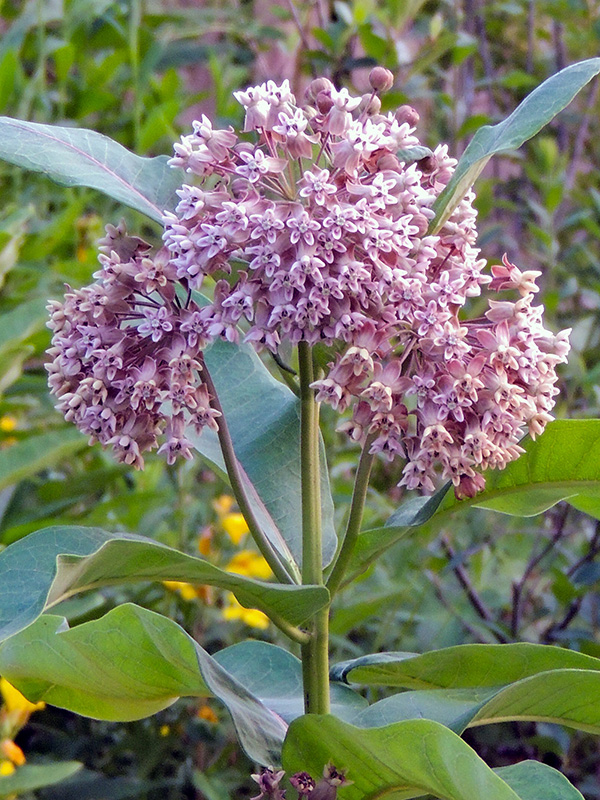
Common milkweed is an attractive plant despite being “common” and despite having “weed” in its name. Monarchs definitely love this milkweed species. It spreads by rhizomes underground, so it’s hard to keep it in one spot. It’s also quite large, but takes well to pruning.
I have some in the hedgerow and near our back sliding door. It’s so important for monarchs and other insects that it’s worth the slight trouble to pull up extras that pop up where I don’t want them — not hard to do at all.
It’s also extremely fragrant — one of my favorite plant scents.
Wildlife: Butterflies
Larval host: Monarch butterflies
** SPECIAL VALUE TO NATIVE BEES **
** SPECIAL VALUE TO BUMBLE BEES **
** Attracts predatory or parasitoid insects that prey upon pest insects **
- Learn more:
- Wildflower Center: Common milkweed
MIDWEST NATIVE: Sullivant’s milkweed (Asclepias sullivantii)
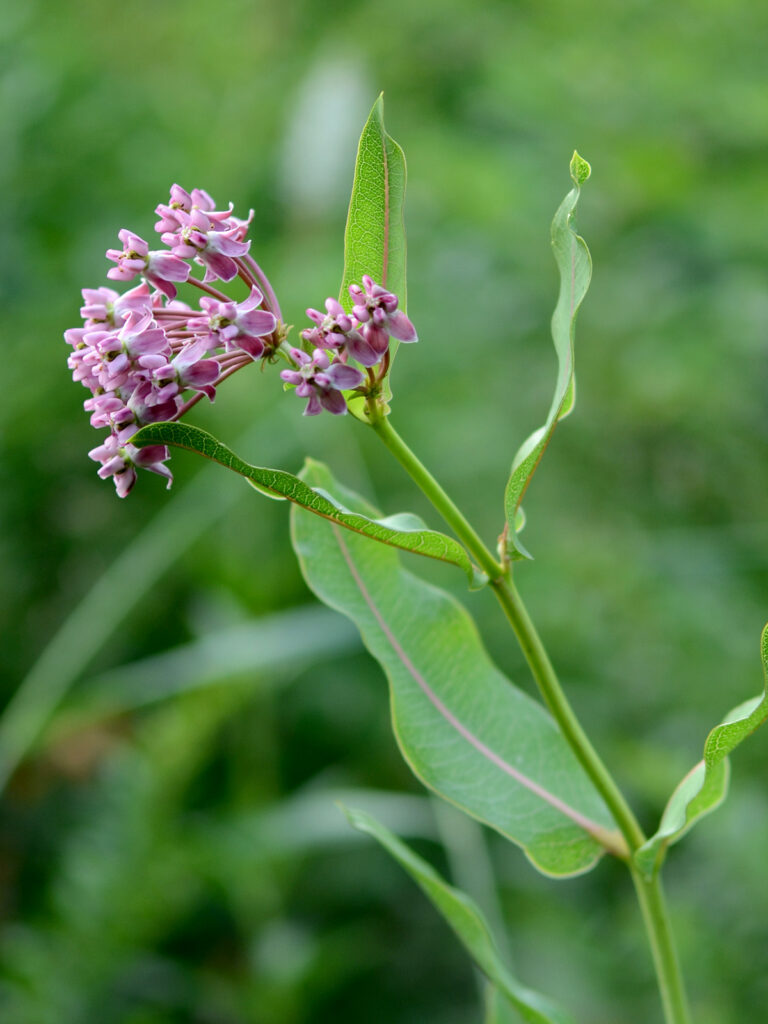
UPDATE 2022: This plant, which I purchased at a native plant conference in Ohio, seems to have died out. Just as well I guess …
Both the leaves and the flowers are of a very heavy, waxy substance. I had only one plant, but I’ve had it for a number of years and have seen very few monarch eggs or caterpillars on this plant, possibly because the leaves are so thick.
If I were a monarch caterpillar, I’d prefer the more tender swamp milkweed leaves, too!
Wildlife: Butterflies
Larval host: Monarch butterflies
** SPECIAL VALUE TO NATIVE BEES **
** SPECIAL VALUE TO BUMBLE BEES **
** Attracts predatory or parasitoid insects that prey upon pest insects **
- Learn more:
- Wildflower Center: Sullivant’s milkweed
Butterfly weed (Asclepias tuberosa)
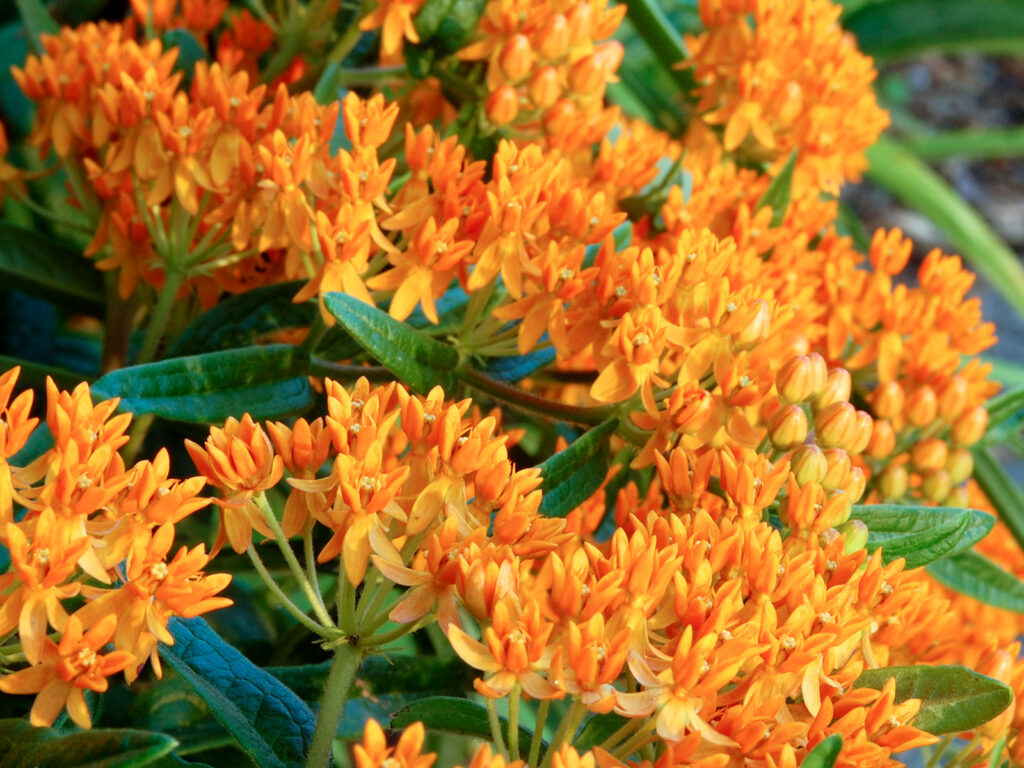
This is another very garden-worthy milkweed. Like swamp milkweed, but unlike common milkweed, it doesn’t spread underground.
Its bright orange color is striking (and especially appropriate here in Syracuse University Orange country!)
The leaves are a quite thick and a little hairier than other milkweeds, which may be why I don’t see as many monarchs laying eggs on it, though this isn’t everyone’s experience.
This plant doesn’t need rich soil or much moisture. Since it’s tap-rooted, it does NOT transplant well, unlike swamp milkweed.
Wildlife: Butterflies, hummingbirds
Larval host: Monarch, Queen, Grey hairstreak
Deer resistance: High
** SPECIAL VALUE TO NATIVE BEES **
** SPECIAL VALUE TO BUMBLE BEES **
** Attracts predatory or parasitoid insects that prey upon pest insects **
- Learn more:
- Wildflower Center: Butterfly weed
Whorled milkweed (Asclepias verticillata)
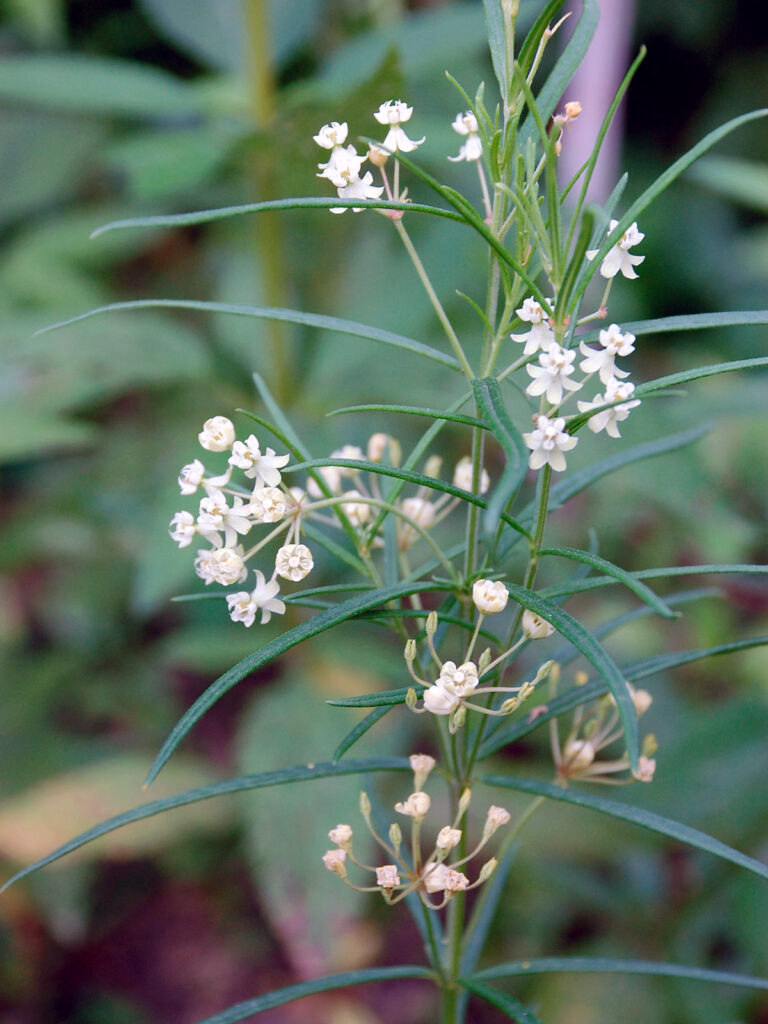
This is a very delicate-looking milkweed. It’s quite short, and has very narrow leaves.
Unfortunately, I didn’t maintain a space around it and it has apparently disappeared through my not-so-benign neglect.
Wildlife: Butterflies
Larval host: Monarch
** SPECIAL VALUE TO NATIVE BEES **
** SPECIAL VALUE TO BUMBLE BEES **
** Attracts predatory or parasitoid insects that prey upon pest insects **
- Learn more:
- Wildflower Center: Whorled milkweed
